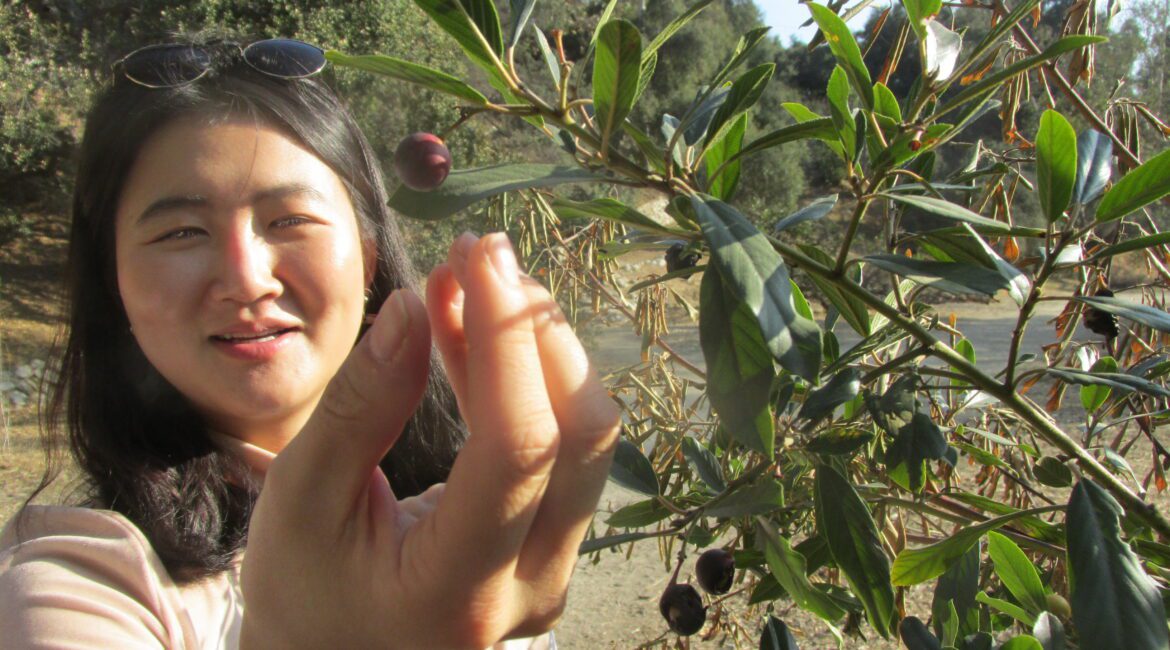CALIFORNIA COFFEE BERRY
[Nyerges is the author of over two dozen books, such as “Foraging California,” “Foraging Arizona,” “Guide to Wild Foods,” Urban Survival Guide,” “How to Survive Anywhere,” and more. More information is at www.SchoolofSelf-Reliance.com]

Of all the plant medicines used by indigenous North Americans, cascara sagrada is one of the best known. Its outer bark was used as a laxative; still today, in cases of chronic constipation it is regarded as one of the safest and best laxatives in the world. It is also said to act as a tonic and reportedly improves the appetite. The Dispensatory of the United States says, “It often appears to restore tone to the relaxed bowel and in this way produces permanent beneficial effect.”
Historians believe that California’s early Spanish priests first learned of this plant from the Mendocino County Native Americans and that it was the priests who named the plant cascara sagrada, which means sacred bark in Spanish.
To use cascara sagrada as a laxative, the bark should be collected from the tree and aged for at least a year before being used. When the aged bark is soaked overnight or boiled for about an hour, the water can be drunk as a laxative. Most herbals offer more details about the use of the medicine.
Two closely related plants are often referred to as cascara sagrada. In Southern California and the Southwest, there is the Coffeeberry plant Fragula californica), and further north we find Fragula purshiana, commonly jut called Cascara. Today, “cascara sagrada” is used most often to designate F. purshiana. Although both species can be used as a laxative, F. purshiana is preferred. Coffeeberry tends to grow as a shrub, whereas cascara can grow from 8 to 30 feet tall.
My interest in the southern California coffeeberry plant stemmed from the word coffee in its name. “Can you actually make coffee from it?” I often asked others who might know. The answer was always the same—no. It was only called “coffee” because the seeds slightly resemble true commercial coffee berries, I was told.
I not only accepted this answer for several years, I even parroted this stock answer myself during my wild food outings when asked the same question.
“OF COURSE YOU CAN MAKE COFFEE FROM THE SEEDS!”
Imagine my excitement, then, when John Watkins of Harbor City, California, an ethnobotanist and attendee to my wild food walks, drawled in his southern accent, “No, sir, it’s not called coffee berry just because the seeds look like coffee! Of course you can make coffee from these seeds.” Holding a handful of the berries in his hand, he then proceeded to tell an enraptured audience exactly how he does it.

He gathers up to one gallon of the fresh seeds and piles them in his yard until the fleshy part rots away, which makes it easier to get the seeds out. Then he thoroughly washes the seeds, dries them in a medium oven, grinds them coarse in the seed grinder, roasts them at 375° F to a deep brown, and then percolates them in a drip coffee maker. “The result,” Watkins testified with all the Southern sincerity he could muster, “is identical to the taste, look, and smell of fresh coffee.” He emphasized, “and I mean identical!”
I couldn’t wait to try it! To hurry the process, I hand-cleaned the fresh-picked fruits to remove the seeds, but otherwise I followed the rest of his instructions. The resulting beverage did taste remarkably like coffee, even though it had only a slight aroma of coffee. An accurate description of the flavor would be either strong tea or weak coffee. Nevertheless, the long-held chaparral myth that you can’t make coffee from this plant has been exploded by personal experience. The wisdom of the sage is certainly valid in this case: try to rediscover everything; know truth by your own direct experience.

For the record, coffeeberry is not botanically related to commercial coffee, and it contains no caffein. Also, if you choose to try this, try it sparingly at first so you can monitor your body’s response.
I would not advise eating many of the fruits, however, unless you cook them. People had mixed results from the freshly-picked fruits. Usually a few is not a problem. I have eaten up to a dozen with no laxative effect. Otherwise, if you want to make something like a jam, you should de-seed the fruits and cook them, and then follow a jam recipe.
If you live in the areas where coffeeberry grows, you might consider growing it in your garden. Coffee berry is more attractive than many of the plants found in the dry and dusty territory of the chaparral. The leaves of this evergreen are brighter green than the surrounding vegetation, and several leaves on each plant are usually yellow (somewhat resembling a gardenia plant). The fruit is also attractive. The globose, two to three seeded fruits are usually about ½ inch in diameter. First green, they turn red and finally nearly black when they mature in summer.
